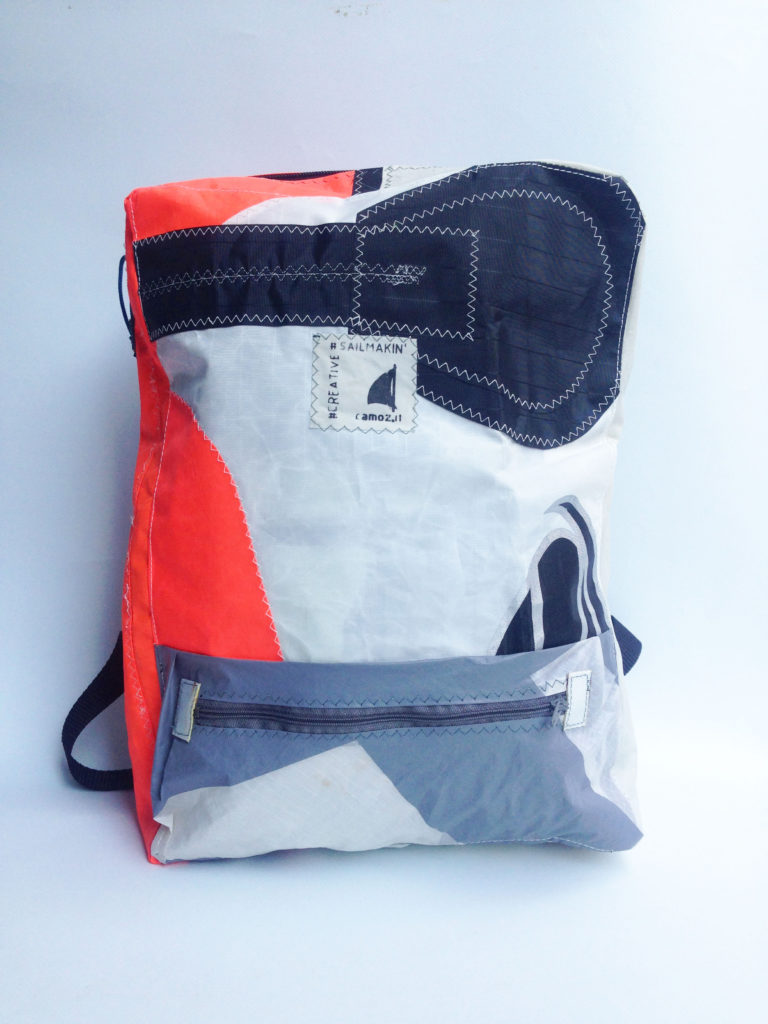That is where Camilla Morelli’s company, Camoz, comes into play. Camoz recycles old sails and sail cloth scraps to create bags and accessories, reducing the amount of sail waste that goes from sea to sea of trash.
An affection for sea and sail:
Morelli does not just run a business involving sailing — she is a sailor herself. Despite growing up in the mountains, Morelli fell in love with the sea at a young age. She and her family spent summer holidays in Croatia, where she watched people sail around the bay, hopeful for the day when she could join them. At 17, she took her first month-long sailing trip to Greece and has been finding ways to be back at sea each year since.
After graduating from university, Morelli participated in a program in Venice to restore wooden boats. It was here that she mastered the art of sailmaking. In 2010, she had the opportunity to move to a sailmaking company in La Rochelle, a small marine community in Southwestern France. That company was much larger than the one in Venice: 60 people sat crafting sails, lengths of fabric unfurled on huge tables lined with sewing machines. This was when she first realized the amount of waste that could be produced in a sailmaking loft.
Turning sail cloth waste into bags:
The sailmaking loft in La Rochelle was also where she had the first chance to make bags from sail cloth waste — an act motivated by necessity as much as creativity. At the end of February 2010, Mother Nature delivered the workshop a violent blow. Cyclone Xynthia slammed the coastal community, flooding the town and leaving the sailmaking loft buried under more than a meter of mud and seawater.
The submerged sail cloth was deemed unusable and was about to face its fate in a dumpster when Morelli decided to pack it up, drive it home to Italy, and wash and reuse it in order to make bags. “We still use some of that sail cloth in our bags today,” Morelli says. “That was really the beginning of my idea.”









